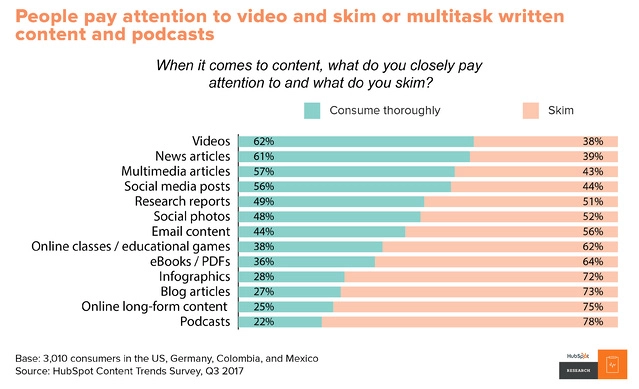
Introduction
Customer interaction is an integral part of digital marketing and an important metric that helps B2B companies determine the effectiveness of their content marketing efforts. Increasingly, people are viewing and responding to content based on how engaging it is. This is reflected in B2B content marketing goals. A report by Content Marketing Institute shows that 71% of B2B firms invest in content marketing for purposes of generating engagement.
But even as B2B companies invest in content development, many of them still struggle to generate customer interactions from that content. In most instances, B2B content is not interesting or user-friendly, hence challenging to generate meaningful customer engagement. When done correctly, content marketing can play a key role in product or service demand generation and conversion of top of the funnel leads into loyal customers.
In this article, we explore how B2B companies can use content to drive meaningful customer interactions. But first, let’s look at what it takes to develop content that customers want to engage with.
Getting The Basics Right
Prior to driving customer engagement, B2B companies should ensure the content they post on their sites and social media platforms is relevant to their audience. To do this, companies should:
1. Know Their Target Audience
B2B companies should have a good understanding of their target audience before they start creating content. This includes understanding the needs they have and their content expectations. With this knowledge, companies can craft an appropriate content marketing strategy. To understand their target audience, B2B companies should develop personas for their ideal customers. Personas in this case would be B2B buyers that a company is targeting and would represent individuals who make purchase decisions in those businesses.
2. Have Clear Content Marketing Goals
Content marketing should help a company achieve a specific goal. Some common content marketing goals include increasing traffic to the company website, boosting search engine rankings or improving customer engagement. When setting content marketing goals, B2B companies should be precise and realistic in a way that makes it easy to track progress.
3. Search for Content Ideas
Customers engage with content that offers them value and addresses their pain points. For B2B companies, this kind of content plays a key role in generating MQLs (marketing qualified leads). To generate such content, B2B companies should search for content ideas by:
- Checking what competitors share or post
- Identifying customer pain points from reviews, customer service queries and complaints
- Looking at what customers search online
Some useful tools that help with research include Quora, BuzzSumo, Topic and Feedly.
Strategies for Making B2B Interactions Meaningful
1. Integrating Videos in Content Marketing
Video is one of the most powerful marketing tools. Most people find videos appealing – in fact, available research data shows that 80% of customers would rather watch a video than read an article from a company. With so many people preferring video content, the demand to use video marketing is increasing with 58% of customers desiring to see more content in video format from brands. The result – video content ranks first when it comes to capturing the attention of customers – which explains why videos are the best customer interaction tools for B2B customers.

Source: HubSpot
There are several ways B2B companies can make and share videos that encourage customer interactions. These include:
- Creating product tutorials
- Interviewing experts in their industries
- Hosting live webinars then trimming the webinar into smaller video clips for sharing on social media
- Making short hack or tips videos
2. Syndicating Marketing Content
Syndication is not new in B2B marketing. As a matter of fact, 65% of marketers in B2B companies use this strategy to generate quality leads. Content syndication involves re-publishing existing content on other third-party sites, enabling companies to reach a wider audience with a wide range of digital content such as blogs, infographics, articles, videos and many others. By syndicating content, companies can backlink to their sites to boost organic traffic and increase their publicity and exposure.
To ensure that syndicated content results on meaningful customer engagement, B2B companies should:
- Identify Relevant Sites
The best place to syndicate B2B content is on high ranking, popular sites that target similar audiences. Before syndicating content, B2B companies should identify the right partners and interest them into publishing their content.
- Determine How to Syndicate Content
B2B companies should decide how they want to syndicate their content. Companies can either re-publish full articles or just headings with backlinks to their sites. The latter is most preferred but is determined by target audience, content type and the partner site. Where possible, companies should link syndicated content to their websites, landing pages and calls-to-action to boost conversion rates.
- Craft a Syndication Strategy
Effective content syndication requires B2B companies to plan ahead. A good syndication strategy would have:
- A clear goal and how to pitch to partners
- Target syndication partners
- Short as well as long term syndication plan
Since the focus is to have their content re-published on high ranking sites, companies should plan to create quality content.
3. Embracing Email Marketing
Statistics show that 87% of B2B companies use email marketing to nurture their target audiences. While this is a good thing, B2B companies can use this strategy to significantly boost customer interactions and grow sales. Compared to other customer engagement strategies, returns from email marketing are far much higher. With a $38 return on investment for every $1 spent, email marketing provides a cheap but targeted way of boosting customer interaction with B2B content.
B2B companies can use emails to share different types of content including:
- Welcome messages to new subscribers
- Content such as blogs, ebooks, and guides
- Product promotions
- Information on loyalty rewards
- Company events and announcements
For each of this content, businesses can use different email templates to boost engagement. Even so, sending emails alone is not a guarantee that customers will read and interact with the content. But there are several things that B2B companies can do to encourage customer interaction with email content. These include:
- Segmenting their target audience depending on where they are on the buyer journey
- Automating email campaigns to allow for personalization and speed
- Sending emails from real email addresses as opposed to general addresses
- Using simple email copies
- Using images to make emails visually appealing
- Adding relevant links on emails to direct readers to full articles on company websites
- Placing relevant calls-to-action buttons on emails to encourage customers to act
4. Leveraging Influencer Marketing
Influencer marketing is a powerful strategy for driving customer engagement in B2B content marketing. Statistics show that 80% of marketers say influencer marketing enables businesses to increase brand awareness and boost customer engagement.
Influencer marketing involves tapping the power that authority figures such as celebrities, industry leaders and experts to drive traffic and encourage customer interactions. The outcomes are worth it – according to the Influencer Orchestration Network, the return on investment from influencer marketing stands at $6.50 for every $1 spent.
There are several ways B2B companies can leverage influencer marketing to drive meaningful customer interactions. These include:
- Getting influencers to write or record video testimonials about their products or services
- Getting them to share social media posts e.g. retweeting posts
- Asking influencers to promote blog posts
- Hosting influencers on webinars
- Collaborating with influencers in development of video content
- Guest blogging on influencer sites
Wrapping It All Up
In this digital age, content marketing is the most effective way to attract and retain customers. However, content creation by itself does not guarantee that business growth. Customers need to interact with that content and take positive action as a result of that interaction. While B2B companies are good at creating content, they need to put more effort towards promoting that content among their audiences. By applying the four strategies discussed above, such companies can use various strategies to boost customer engagement and increase conversion rates.
Our blog
Latest blog posts
Tool and strategies modern teams need to help their companies grow.

A successful webinar requires more than just a great speaker and a compelling topic. ...

Modern business success depends on more than just acquiring new customers because sus...

Generative AI in B2B marketing represents more than a passing trend because it active...






